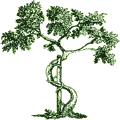
|
|||||||
Shoulder Separation
What is it?
Shoulder separation refers to an injury to the acromio-clavicular joint or AC joint. The AC joint is located at the tip of the shoulder.
What causes it?
The injury is most commonly a result of a direct impact on the shoulder. The injury is classified according to its severity.
- Grade I separation occurs when the ligaments holding the joint together (the acromio-clavicular capsule and ligaments) are bruised, but still mostly intact.
- Grade II separation occurs when the acromio-clavicluar ligaments are disrupted, and the cartilage in the joint may be injured.
- Grade III separation occurs when the acromio-clavicular ligaments, as well as the coraco-clavicular ligaments which are essential for stability of the ACV joint, are disrupted.
What are the symptoms?
The patient usually gives a history of a fall on the shoulder, from a bicycle or horse. There is bruising, swelling and tenderness at the tip of the shoulder.
What does your doctor do about it?
An X-ray is taken which will show the extent of the disruption or separation. In some cases, a X-ray is taken with a weight hanging from the wrist. This is done to test the stability of the AC joint. If the coraco-clavicular ligament has been disrupted, the AC separation becomes more obvious with weights.
Grade I and II separations will usually resolve with rest. An arm sling is provided for comfort. Range of motion exercises are started in a few days as soon as the pain has subsided, and strengthening exercises added in 1 or 2 weeks. Most patients can resume sports in 3 to 6 weeks. If the cartilage in the AC joint has been torn, it may not heal, but causes painful catching and clicking. Surgery to excise the torn cartilage may then be necessary.
Grade III separations are more serious. Some surgeons advocate surgery to stabilize the AC joint. Others feel that immobilization in a sling for 3 weeks, followed by intensive physical therapy give just as good result. In any case, it is important that the shoulder be painless and have full range of motion and strength before the athlete returns to sports.
NOTICE: The information presented is for your information only, and not a substitute for the medical advice of a qualified physician. Neither the author nor the publisher will be responsible for any harm or injury resulting from interpretations of the materials in this article.
Questions
or comments? Post your thoughts in the Orthoseek
Message Forum!
Find a pediatric orthopedic surgeon
in an area near you.
Home | About Us | Orthopaedic Topics | Message Forum
![]()
Comments, questions, or suggestions are welcome. Please
contact us using this form.